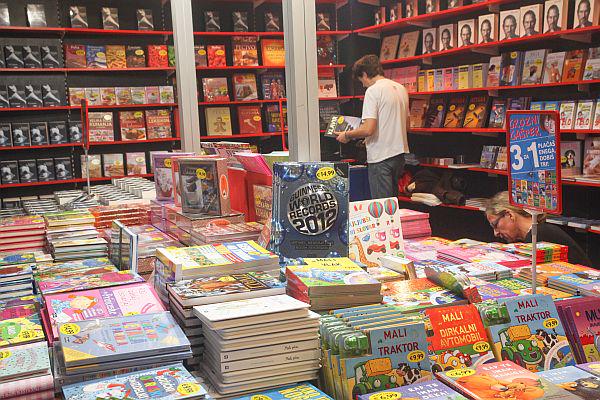
A total of 389 books and brochures were published in the first year, in 1919. Four years later, 672 books and brochures were published, which on average is 51 titles on 100.000 inhabitants. Ten years later, 724 titles were released. In the middle of the World War II, in 1943, 360 books and brochures were published, which is half less than ten years before that. A decade later, in 1953, the number of published titles was still lower than before World War II: 635 books and brochures were published that year, which is 42 titles on 100.000 inhabitants.
In the following two decades book publishing recorded increased growth. A total of 1,719 books and brochures were published in 1973. That's 97 titles per 100.000 inhabitants on average. There were then two decades of oscillation, when there were between 1,800 and 2,400 titles per year. 2,440 books and brochures were published in 1993.
After Slovenian independence the number of published books increased year after year all until 2008: between the years 1994 and 2003, around 3,600 books and brochures were published every year. 2003 brought 3,965 titles. From 4,340 to 6,358 titles were published in Slovenia between 2004 and 2008. After that, during the economic and financial crisis, book publishing started to decrease. In 2013, the last year on record, 5,084 books and brochures were published, which is 247 titles per 100.000 inhabitants.
How much do we read compared with the EU?
Comparisons were also drawn between book reading in Slovenia and in the EU. The Eurobarometer survey on accessibility to culture and taking part in cultural activities, which was conducted between April 2013 and May 2013, shows that in the last 12 months before the carryin out of the survey, 67 percent of Slovenia's citizens read at least one book. Swedes read the most at 90 percent, while the least amount of people who read books was recorded in Portugal, at around 40 percent. The average for the whole European Union was 68 percent.
And how much money to readers spend on books?
The Statistical Office also released figures from a research into how much households spent on books in 2012. The results revealed that a household member set aside around 12 euros for the purchase of literature and children's books, 19 euros for education books and 4 euros for other kind of literature. That's a total of 35 euros per year.
Ten years ago the average household member spent around 20 euros for the purchase of books.
P. G.; translated by K. J.

































































